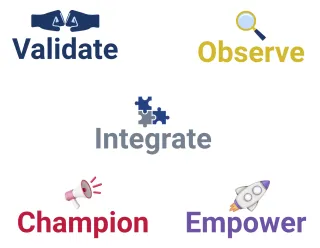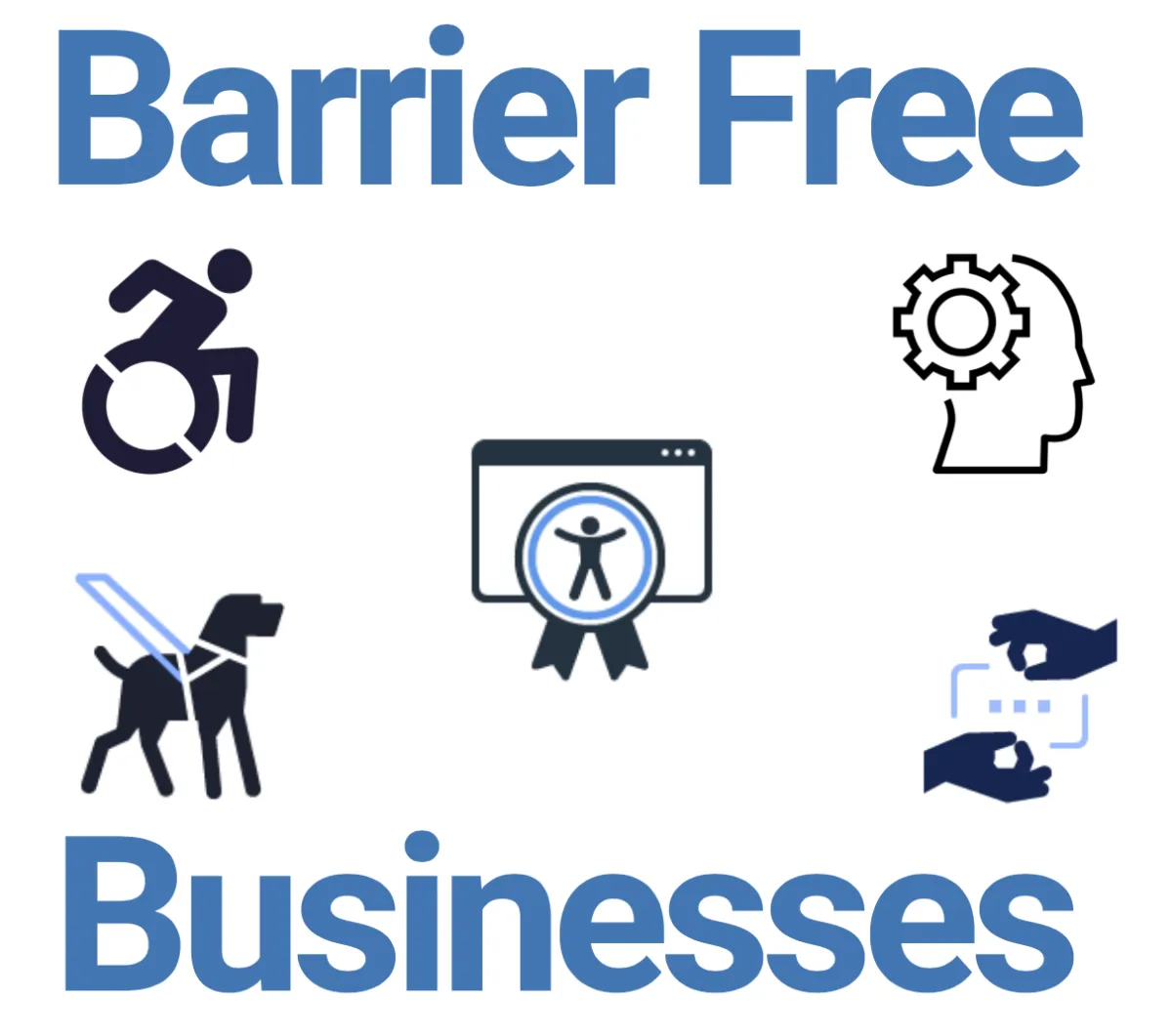FAQs
Being listed as a Barrier-Free Business is not just about earning a certification — it’s about making a statement that the business values equity, inclusion, and accessibility for all. It opens doors to new markets, enhances brand reputation, mitigates risks, and fosters operational excellence, all while contributing to a more inclusive society.

Frequently Asked Questions
How can being a Barrier Free Business increase my brand's reputation and credibility?
Social Proof and Trust: Being listed as a Barrier-Free Business immediately communicates to potential customers, partners, and stakeholders that the business is committed to accessibility and inclusion. It positions the business as a forward-thinking, socially responsible organization that prioritizes equitable access.
Industry Leadership: Achieving certification, particularly at the higher levels (Champion and Empower), establishes the business as a leader in inclusive practices. It demonstrates a proactive approach to breaking down barriers and sets a benchmark for others to follow.
How can being a Barrier Free Business increase my customer base and market reach?
Access to a Larger Audience: With up to 19 million Americans potentially excluded from businesses due to accessibility barriers, certification helps businesses tap into an underserved market segment. This includes people with disabilities, their families, caregivers, and advocates who are actively seeking inclusive businesses.
Positive Word-of-Mouth and Referrals: Businesses that prioritize accessibility often receive strong word-of-mouth recommendations within disability networks and advocacy groups.Being listed as a Barrier-Free Business can create a ripple effect, attracting loyal customers who value inclusive spaces.
How does being a Barrier Free Business give my business a competitive advantage and differentiation?
Unique Selling Proposition: The VOICE Framework (Validate, Observe, Integrate, Champion, Empower) offers a clear, structured pathway for businesses to showcase their commitment to accessibility in a tangible, measurable way.This framework helps differentiate the business from competitors who may not be as proactive in accessibility efforts.
Inclusive Marketing and Branding: Barrier-Free Businesses can use the certification as a marketing asset, incorporating it into branding, promotional materials, and customer communications.
The use of visual symbols (e.g., 🤜🤛, 🔍, 🧩, 📣, 🚀) provides instant recognition and reinforces the message of inclusivity.
How does being a Barrier Free Business offer operational efficiency and cost savings?
Risk Mitigation and Compliance: Businesses that pursue certification are better positioned to comply with ADA requirements and other accessibility standards, reducing the risk of costly lawsuits or negative publicity. It also helps identify potential barriers that could cause injuries or prevent customers from accessing services.
Operational Insights: The self-assessment tools and criteria encourage businesses to systematically evaluate their physical and digital environments, leading to operational improvements. This can include optimizing website accessibility, creating more efficient physical layouts, and implementing staff training on inclusive customer service.
How does being a Barrier Free Business communicate community impact and social responsibility?
Promoting Equity and Inclusion: Businesses that achieve certification are actively contributing to a more inclusive society, creating opportunities for people with disabilities to participate fully in community life. It aligns with broader corporate social responsibility (CSR) goals, positioning the business as a socially conscious organization.
Mentorship and Industry Influence: At the Empower level, businesses can become mentors to other organizations, sharing best practices and inspiring others to adopt inclusive practices.This not only strengthens the company’s leadership profile but also fosters stronger community ties
How does being a Barrier Free Business expand revenue opportunities?
New Revenue Streams: Certified businesses may also receive referrals or business leads through the Barrier-Free Businesses network, expanding their market reach.
How does the VOICE badge system work?
The VOICE Badge System is a comprehensive, multi-level certification framework that empowers businesses to assess, improve, and promote their accessibility efforts.
Each badge level serves as a milestone, symbolizing progress in inclusive practices and creating visibility for businesses committed to breaking down barriers.

How are badges awarded?
Initial Assessment: Businesses complete a self-assessment, scoring their performance in the key accessibility areas.The total score determines the initial badge level.
Progress Tracking: Businesses can reassess periodically to aim for higher badges, reflecting continuous improvement.Specific recommendations for moving to the next level are provided after each assessment.
Badge Display and Marketing: Businesses receive digital and physical badges that can be displayed on websites, promotional materials, and storefronts.Higher-level badges (Champion, Empower) may also be featured on the Barrier-Free Businesses website, creating additional marketing and referral opportunities.
Are the VOICE badges ADA compliance guarantees?
Each badge reflects the business’s efforts to meet VOICE standards, but does not guarantee full legal compliance with the ADA Standards for Accessible Design or the WCAG 2.1.

